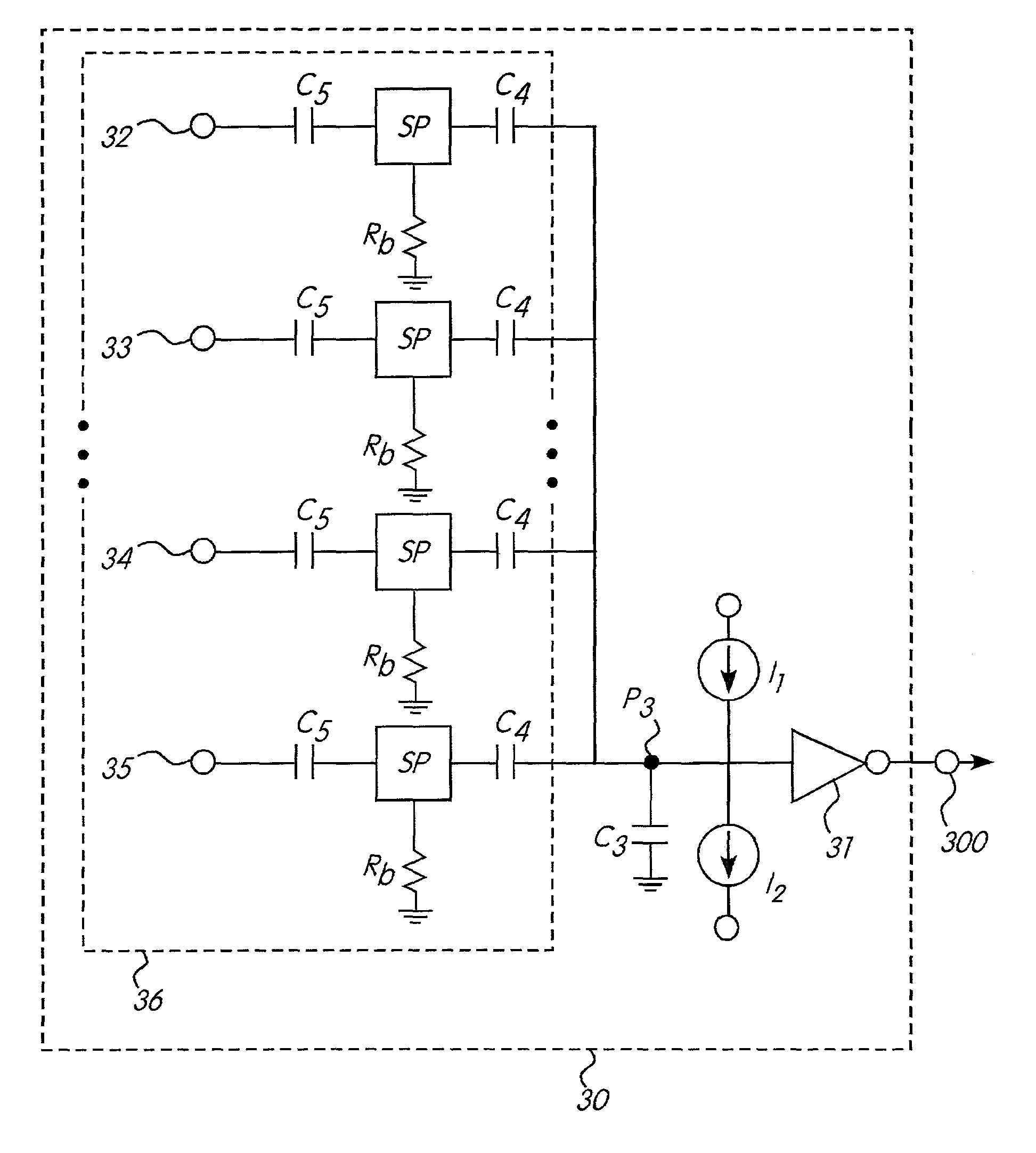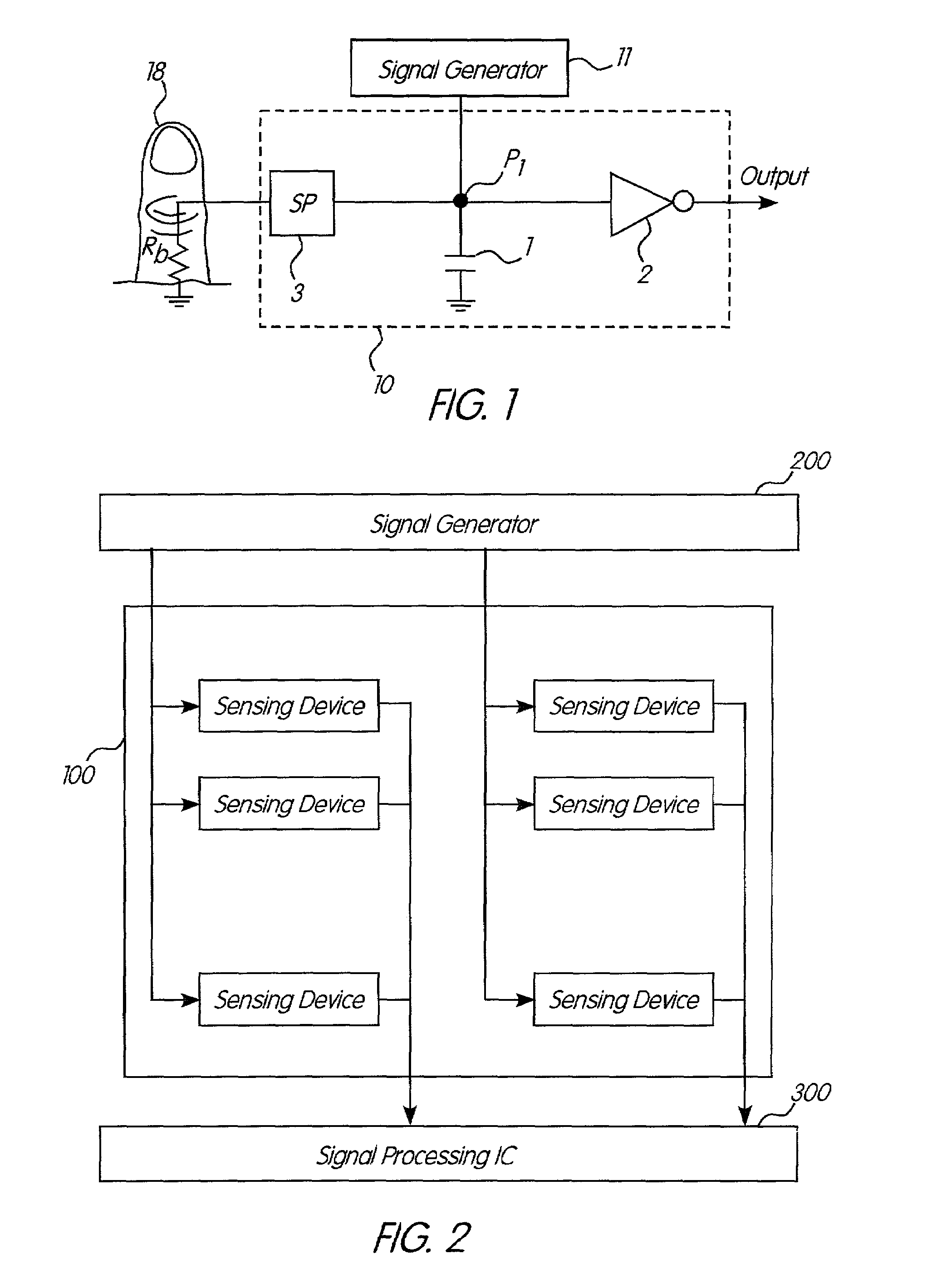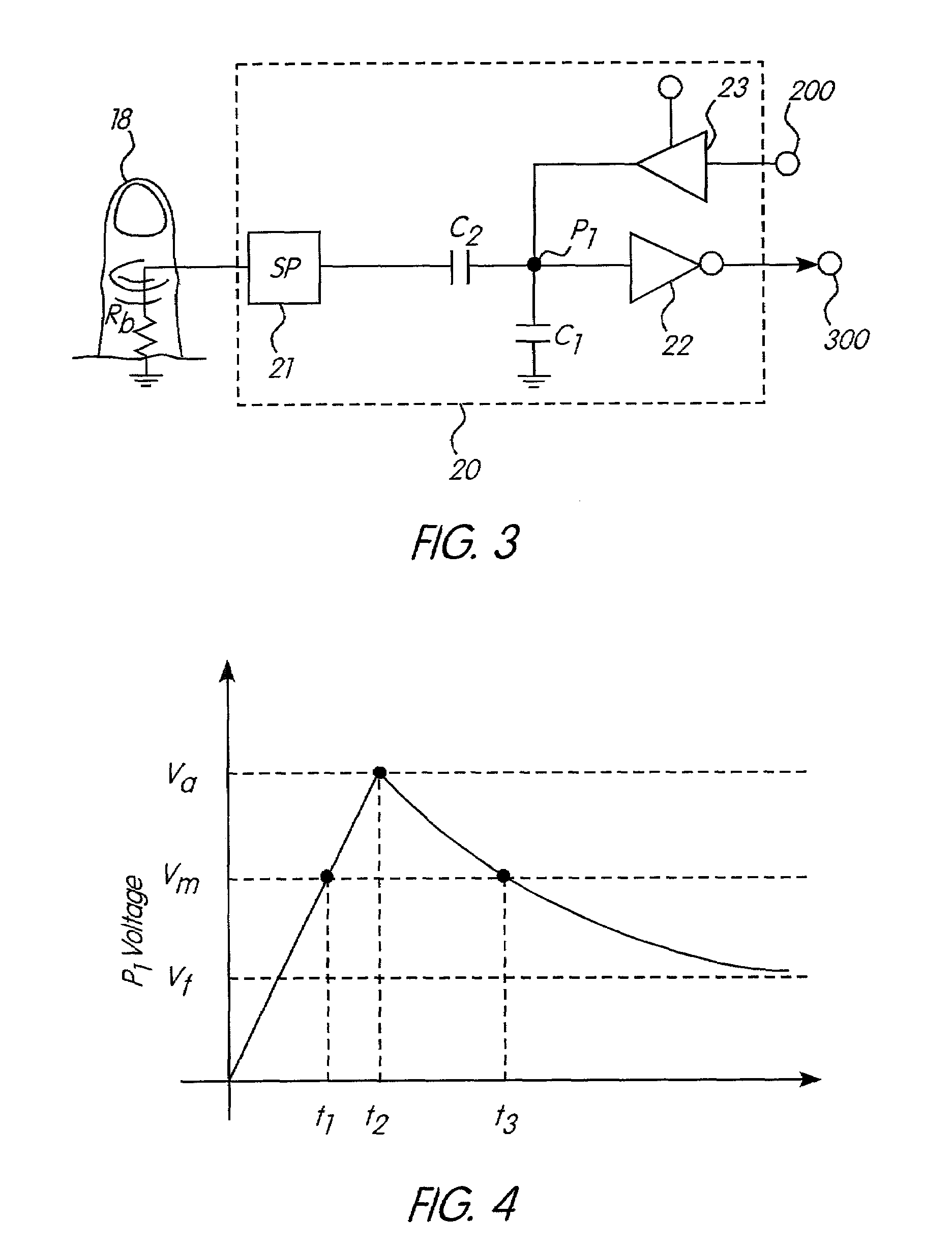Apparatus and method for sensing the degree and touch strength of a human body on a sensor
- Summary
- Abstract
- Description
- Claims
- Application Information
AI Technical Summary
Benefits of technology
Problems solved by technology
Method used
Image
Examples
Embodiment Construction
[0028]A block diagram of the preferred embodiment of the sensor of the present invention is shown in FIG. 2. The sensor consists of a array 100 of sensing devices 20 that are electrically connected to signal processing chip 300. Signal generator 200 sends controlled input power each of sensing devices 20 in array 100. Sensing devices 20 output static and dynamic signals to signal processing chip 300, depending on whether or not there is human contact, and will output a different signal, depending on the level of human contact.
[0029]The simple sensing device shown in FIG. 3 can act as one of a plurality of sensing devices 20 in array 100 of sensing devices as shown in FIG. 2, receiving input from signal generator 200 that sends controlled power to selected sensing elements array 100.
[0030]The sensing device of FIG. 3 consists of sensing point 21 that provides a place for contact with a portion of a human body, most likely a finger 18, output device 22 that outputs static or dynamic s...
PUM
 Login to View More
Login to View More Abstract
Description
Claims
Application Information
 Login to View More
Login to View More - R&D
- Intellectual Property
- Life Sciences
- Materials
- Tech Scout
- Unparalleled Data Quality
- Higher Quality Content
- 60% Fewer Hallucinations
Browse by: Latest US Patents, China's latest patents, Technical Efficacy Thesaurus, Application Domain, Technology Topic, Popular Technical Reports.
© 2025 PatSnap. All rights reserved.Legal|Privacy policy|Modern Slavery Act Transparency Statement|Sitemap|About US| Contact US: help@patsnap.com



